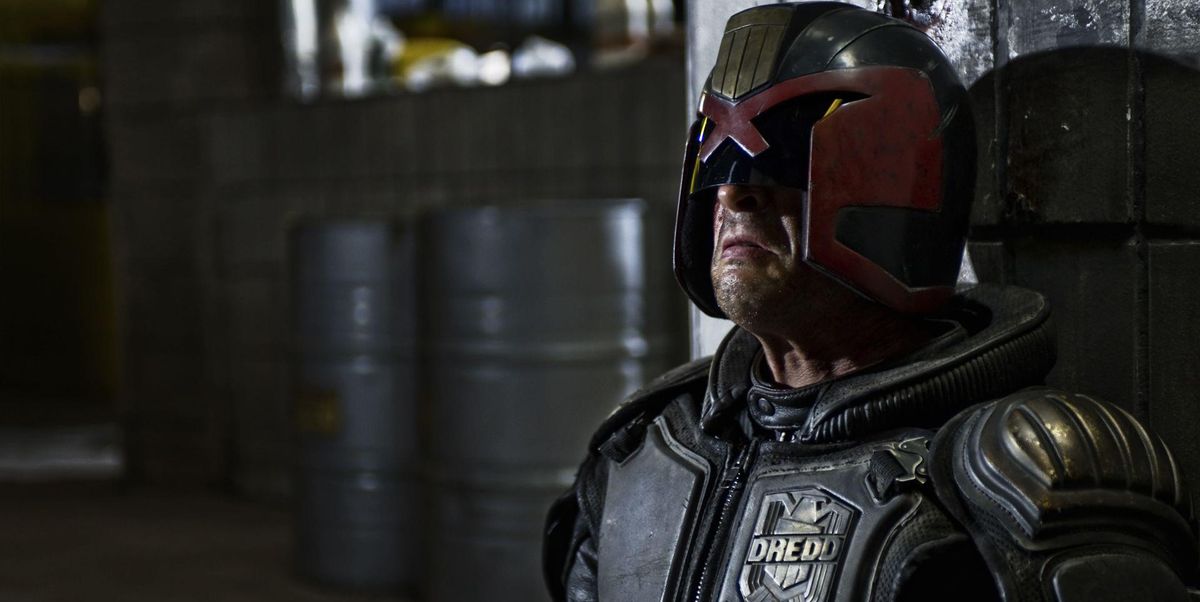Why Dredd Is The Most Underappreciated Adult Superhero Film
Dredd eventually made it to theatres around the world after a terrible production that entailed plenty of delays and reshoots. In the history of superhero films, 2012 marked a significant milestone. It witnessed a major change in how Marvel and DC handled its primary concepts; with The Avengers, the MCU explored the crossover potential of their linked world, and Christopher Nolan wrapped up his Batman trilogy a year before the DCEU debuted with The Dark Knight Rises. The genre was booming, but when a new Dredd picture was released in September, it was mostly overlooked.
It failed to create an impression at the box office due to a half-hearted marketing strategy by the studio, and its planned sequels were canceled. That’s a pity, since it’s one of the best comic book movies ever created, and it’s enormously undervalued in a culture that bears well-made comic book movies on its shoulders. Reasons, why Dredd is the most underappreciated adult superhero film, are listed below.
Wonderful Cast

The cast is responsible for making or breaking the storyline. And luckily Dredd boasts an impressive cast of actors. Karl Urban was an excellent choice for Dredd, capturing the renowned judge’s tough demeanor but still revealing hints of weakness under the surface. As the psychic Judge Anderson, Olivia Thirlby was an excellent counterbalance. The movie’s villain, a vicious criminal leader, is played by Lena Headey, while The Wire’s Wood Harris provides great backing as a gangster who attempts to get into Anderson’s mind.
Faithful Adaptation

The character of Judge Dredd has already been portrayed in films in the 1990s by Sylvester Stallone, but that film was utterly untrue to the concept. He never wore his helmet, he was toned down to be a more palatable Hollywood hero, and the whole thing was packaged as a buddy comedy with none other than Rob Schneider as Dredd’s comedic foil. The permanently helmeted protagonist in the 2012 adaption is a straightforward and simplistic beast, and it works all the better for it.
3-D Representation

“Slo-Mo,” the addictive substance that Ma-Ma hooks her patients on, is the most notable application of 3D. The consequences of consuming the drug, as the name implies, blur the effects of time, and 3D is effective in demonstrating its hideous influence on users, entrancing pictures of awful acts of ultraviolence in super slow motion with the color saturation ramped up. Gangsters feed this drug to their adversaries before tossing them off a high-rise to their deaths. In chilling detail, bullets rip through human flesh, as bodies trudge toward the ground from incredible heights. In the grand conclusion, the villain meets a horrific, aesthetically spectacular end owing to this drug.
No Backstory

Most superhero comic adaptations — at least the first in a series – depict the character’s origin story, setting the stage for sequels that may plunge right into the action. Dredd isn’t given a backstory or given any compassion; instead, he’s depicted as the mysterious man without a name, whose language is restricted to one-liners and typically precedes some major ass-kicking. The history of Judge Dredd’s stories, Garland realized, isn’t nearly as significant as the concepts. Dredd is a self-contained narrative with nonstop action, focused on the character and the place he inhabits in rather than the character’s past, which is incidental.
The Plot

The narrative of Dredd is frequently likened to The Raid, a film with a similar setup involving law enforcement officers ascending a tower block to grab someone on the top floor that draws similarities when viewing it. Dredd, on the other hand, took ages to develop therefore it was in making before The Raid, thus the parallels are purely coincidental. Judges Dredd and Anderson are trapped in a 200-story high-rise in the heart of a dystopian megalopolis, where they must battle their way past legions of henchmen working for the drug lord who owns the skyscraper in order to bring down her criminal enterprise. This setup allows the narrative to be driven by action rather than the usual worldbuilding and explanation featured in most comic book movies.





